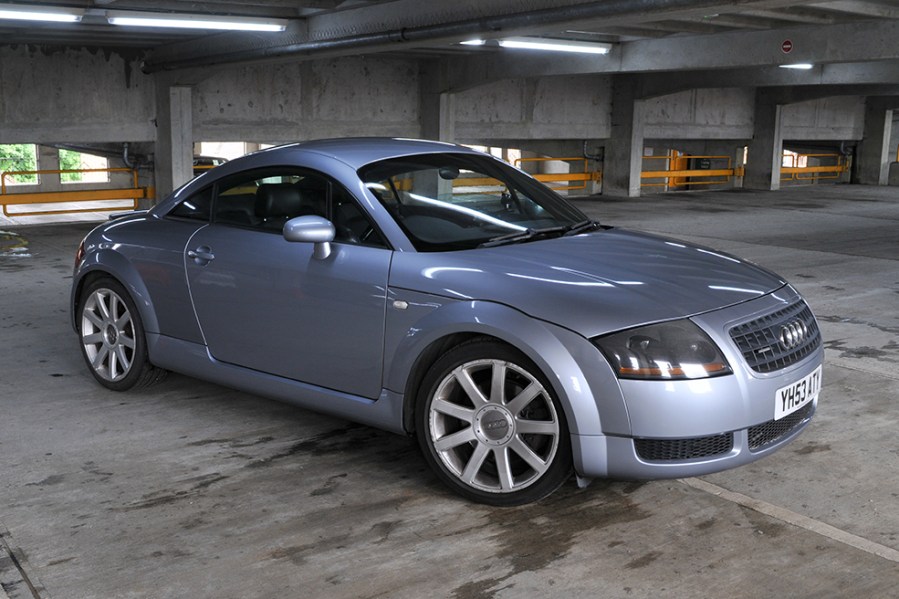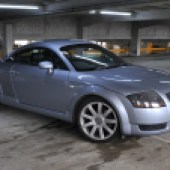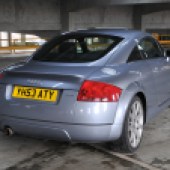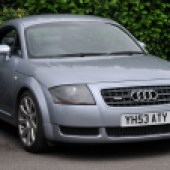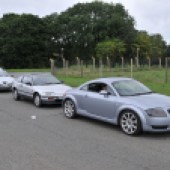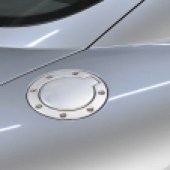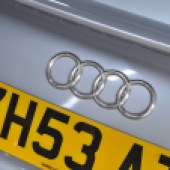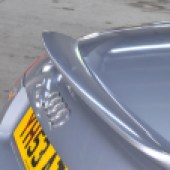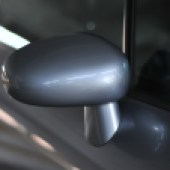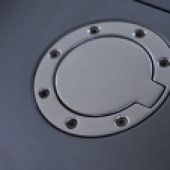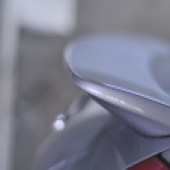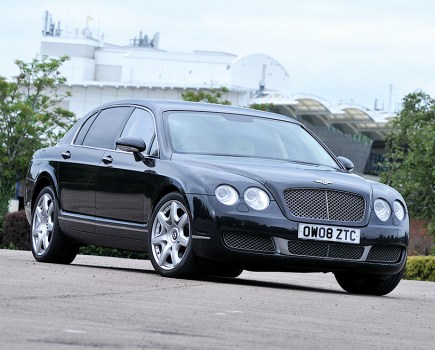The Audi TT went from motor show concept to production reality with very few changes, and today it’s a real modern classic. Here’s how we got on with ours
The science of badge engineering may have been established by Rootes and BMC back in the ’60s but the idea of platform sharing – where a range of models is spun off the same basic floorpan architecture – is rather newer.
It had been tried successfully before of course in a limited way as the basis for ‘world car’ designs from multinational makers, incuding the Chevette, the Mk2 Cavalier and even the Escort but all these were recognisably similar.
Ultimately it was the Volkswagen Group which really got stuck into the science of platform sharing during the ’90s and took the idea just about as far as the technology then allowed it. Instead of simply producing mildly different versions of the same car to suit different local markets, Wolfsburg used its ‘PQ34’ platform as the basis for an entire raft of very different models across four different brands and many different price levels.
That PQ34 design is commonly known as the MkIV Golf platform since that was the highest-volume car to be built on it, but it also formed the bones of the humble Skoda Octavia, the ‘Spanish Alfa’ Seat Leon and Toledo, the controversial New Beetle and two upmarket Audis: the A3 and TT.
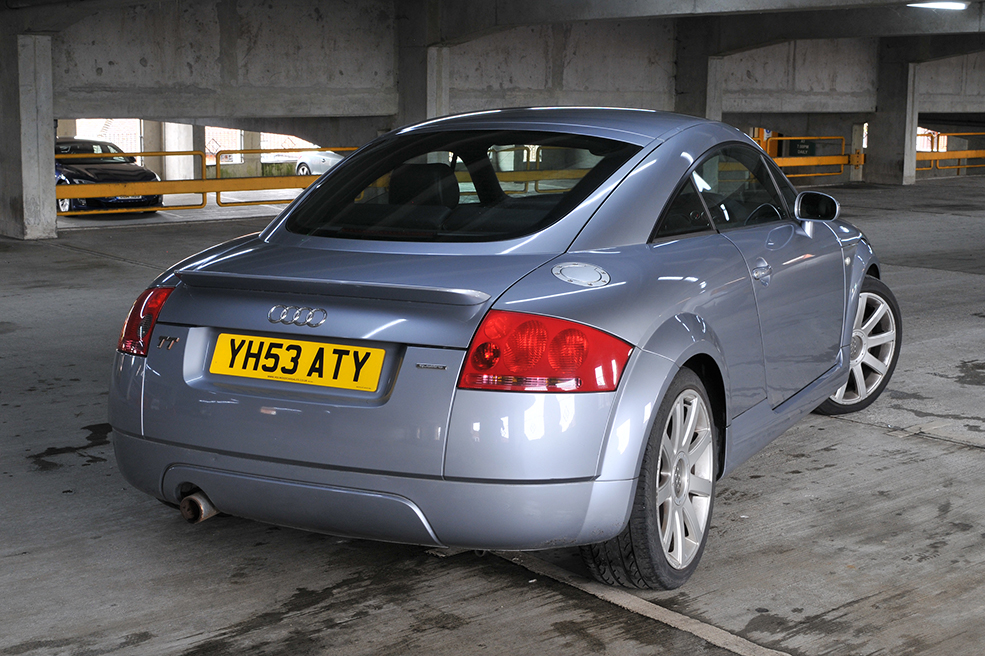
The TT was something of a departure for Audi, which until the concept was unveiled at the Frankfurt show in 1995, was known more for chunky saloons and estates – or rather, Avants in Audi speak. Yes, it had a coupe in the line-up but that was little more than a two-door Audi 80 and the TT in comparison was something very different.
Audi’s press material states that the original design brief for the TT was to produce a car “radical in design, but suitable for everyday use” and it’s fair to say that the first part of that requirement was certainly met.
The design may not have lacked the graceful, flowing lines of a Pininfarina Peugeot or Ferrari, but was elegant in its own way with a chunky, broad-shouldered stance which could only be German.
indeed, much was made at the time of the design showing Bauhaus influence, the reference relating to the prewar German design movement which required form to follow function.
That’s a gross simplification of course, but essentially the style when applied to a car gave it an industrial, engineered look and the proportions and curves of the TT were such that they also evoked some of the 1930s Auto Union ‘Silver Arrows’ racers.
Compare an image of that original TT concept today with the early production cars and you can’t help but wonder if the production car was well underway when the wraps came off the stand at Frankfurt. Certainly the time between the unveiling and the start of production was pretty short and the showroom version was unusually similar to the concept.
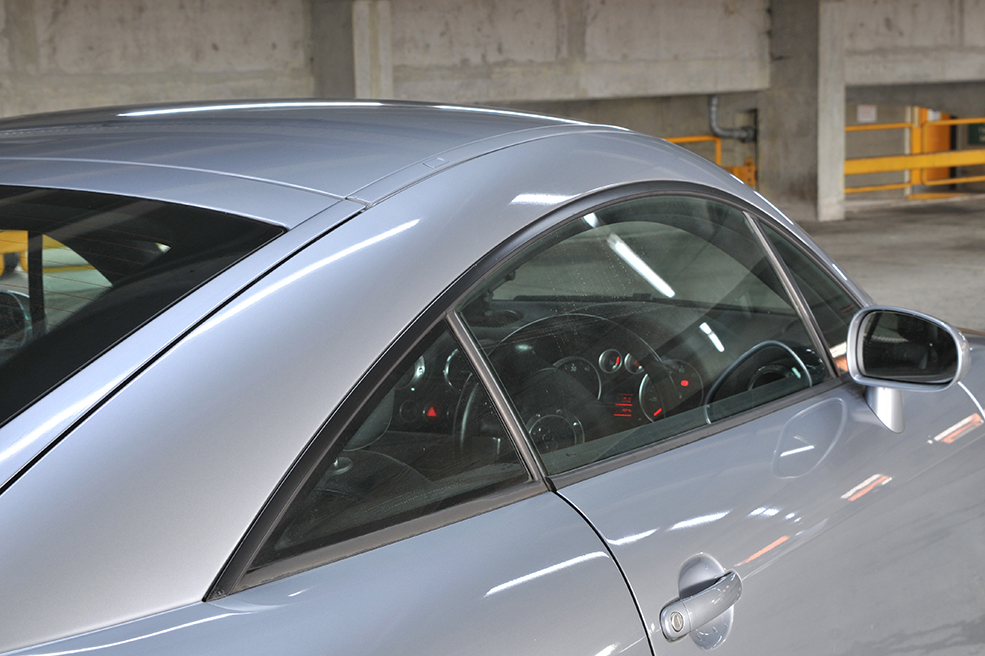
It was perhaps this which wowed the buyers of those early TTs: all too often an adventurous motor show concept is so watered-down during the transition to the production line that the excitement is lost, but the TT was barely altered.
The swooping rear side roofline was altered to accommodate rear quarterlight windows, while side repeater indicators were added, the shape of the front plastic lower valance was modified… and that was about it.
Perhaps it was rushed to production too quickly after all though, since shortly after the car went on sale a series of crashes brought the into question the car’s safety, specifically that of its high-speed handling. After a German champion rally driver was killed in an early TT, serious investigations took place during which it was discovered that under certain circumstances, excessive rear-end lift would cause the rear wheels to lose all grip and the car spin out of control.
The solution was a recall in April 2000 to upgrade the electronic ESP stability control, fit a small rear ducktail spoiler and modify the suspension using revised control arms, revised dampers and thicker front anti-roll bar.
It emerged later that the chassis engineers had always been in favour of the spoiler but that the stylists had resisted it and many modified cars today have had the spoiler removed but clearly it’s something you do at your own risk. The same chassis engineers also claimed that it was possible to solve the problem without the spoiler but only at the expense of dialling in excessive understeer.
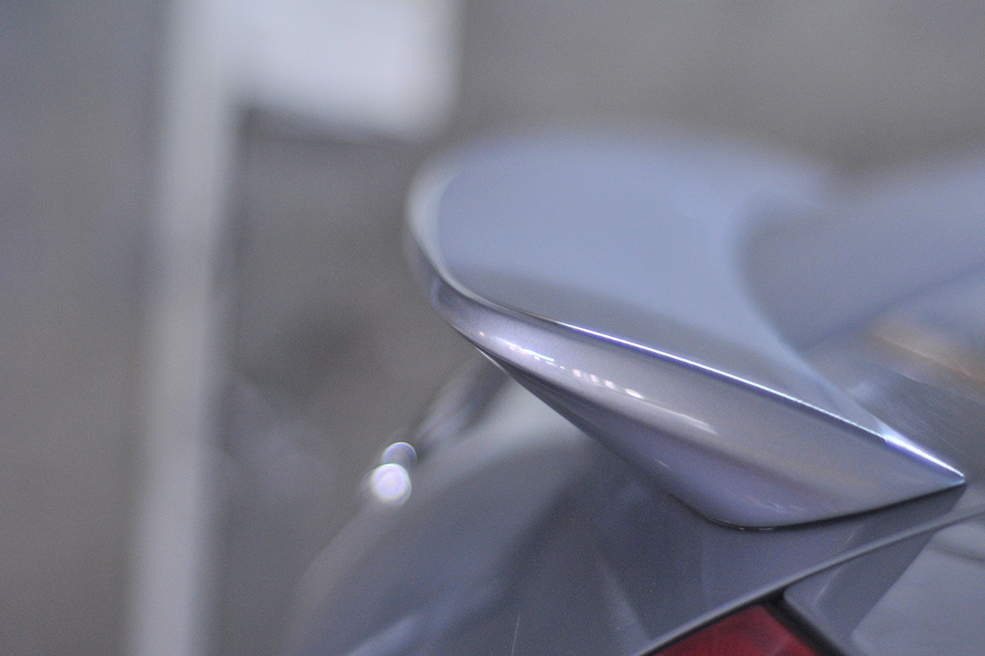
Apart from that little episode, the TT was the ultimate evolution of that Golf platform and offered a car which was almost unique in the market. With the option of turbocharged four-cylinder engines rated at either 180 bhp or 225 bhp, plus quattro four-wheel drive (standard on the 225 and optional on the 180), the TT was in a class of its own.
The Golf underpinnings and proven drivetrain made it an easy car to own, while Audi build quality couldn’t be equalled by any other two-seater sports car at the time and it could even get you to work in deep snow. Something which Audi didn’t tend to mention in the press material at the time was that the TT was one of the first European models to be constructed outside Germany: the cars were assembled at Audi’s Hungarian factory which had been in operation in Gyor since 1993, using complete bodyshells delivered from Ingolstadt. Usefully, the Hungarian site had been established as an engine manufacturing plant and was the VW Group’s sole supplier of the 1.8 turbo engine.
The car’s unique place in the market was reinforced when the open version entered production in 1999, the prototype having first been displayed at the 1996 Toyo show.
The four-cylinder engines were joined in 2003 by a 3.2-litre six-cylinder using VW’s narrow-angle ‘VR6’ V6 motor good for 250 bhp and paired with standard quattro drivetrain. This was joined in 2004 by a 150bhp front-wheel drive model and followed in 2005 by the Quattro Sport limited edition which used a 240 bhp version of the 1.8-litre turbo motor and achieved a 75 kg weight reduction by deleting the air conditioning and some trim items – think Audi’s answer to the BMW M3 CSL.
The original TT was replaced in 2006 by the second-generation car which featured part-aluminium construction but lost the bold lines of the original styling in favour of a sleeker but more generic look.
Right now the first-generation TT remains a very affordable modern classic and you’ll find a presentable coupe for £2000 with convertibles starting at around £3000. The mechanical parts are familiar to any VW/Audi specialist and firms like Euro Car Parts and GSF can supply pretty much everything the DIY-minded owner might need.
The TT remains a stylish car and its unique styling has aged gracefully, making it an ideal modern classic which can also be pressed into daily use. Grab yourself a 225 bhp quattro roadster, budget for a few simple fixes to get it up to scratch and you won’t be disappointed.
Our Audi TT project car
On the Classics World team, we’ve often discussed what a bargain the TT appears to be and it was publishing boss Phil Weeden who was first to spend his own money taking the plunge.
On the face of it, Phil’s purchase sounds like everything you’d advise a used car buyer not to do: his 2003-model 180bhp coupe was bought for £1800 in the twilight in a pub car park somewhere near Slough from a private trader.
It’s not as random as it seems though, since the trader in question was in fact a VAG dealer technician and clearly knew his stuff, also having a couple of Skodas and Seats for sale.
Indeed, one reason Phil bought this car was its general condition, especially the interior which despite its 17 years of age and 85,000 miles looked and felt spotless – apart, that is from the common problem if disappearing pixels on the dashboard displays.

On first acquiring the car, it was taken to a general local garage for a basic service, but a year later and with an MoT test looming, it was decided that a VAG specialist was needed and as we went to press Phil was steadying himself for a hefty bill thanks to a refurbished dash pack and the need to replace corroded rear brake lines, a job which requires the fuel tank dropping to do properly.
Like so many cars of this era, advice from marque specialists is that leaving them standing for long periods is the worst thing you can do: the Haldex coupling in the quattro four-wheel drive system is particularly prone to getting noisy after periods of inactivity and having bought the car during one lockdown and then taking it off the road, it’s seen only nine months of regular usage during 18 months of ownership.
When lockdowns eased though, Phil reports that the TT feels surprisingly modern and can be put to everyday use like a modern car. Yes, people may scoff at the ubiquitous Golf Mk4 platform which was used under everything from Skoda to Audi during that period but parts shared with so many other VAG models do make the TT affordable to run. For DIY-minded owners, it also makes the cars an affordable prospect since there’s not much you can’t do at home given enough space and patience.
On the subject of which, many owners reckon that the 180bhp engine is in some ways the better ownership proposition than the 22bhp unit, simply because it’s effectively the standard unit used in so many other VW Group models, whereas the 225 was modified significantly and is a more highly stressed unit less tolerant of neglect. Certainly the TT isn’t a heavy car and the 180bhp motor makes it quick enough to be fun.
The verdict from Phil’s experience then is that although these are cheap cars to buy right now, be prepared to spend what it costs to get it up to scratch and you’ll have a stylish, practical alternative to an anonymous modern car which will last you a long time.
As the scruffier examples start to disappear when big bills crop up, a nice example should be set to inch up in value too.

